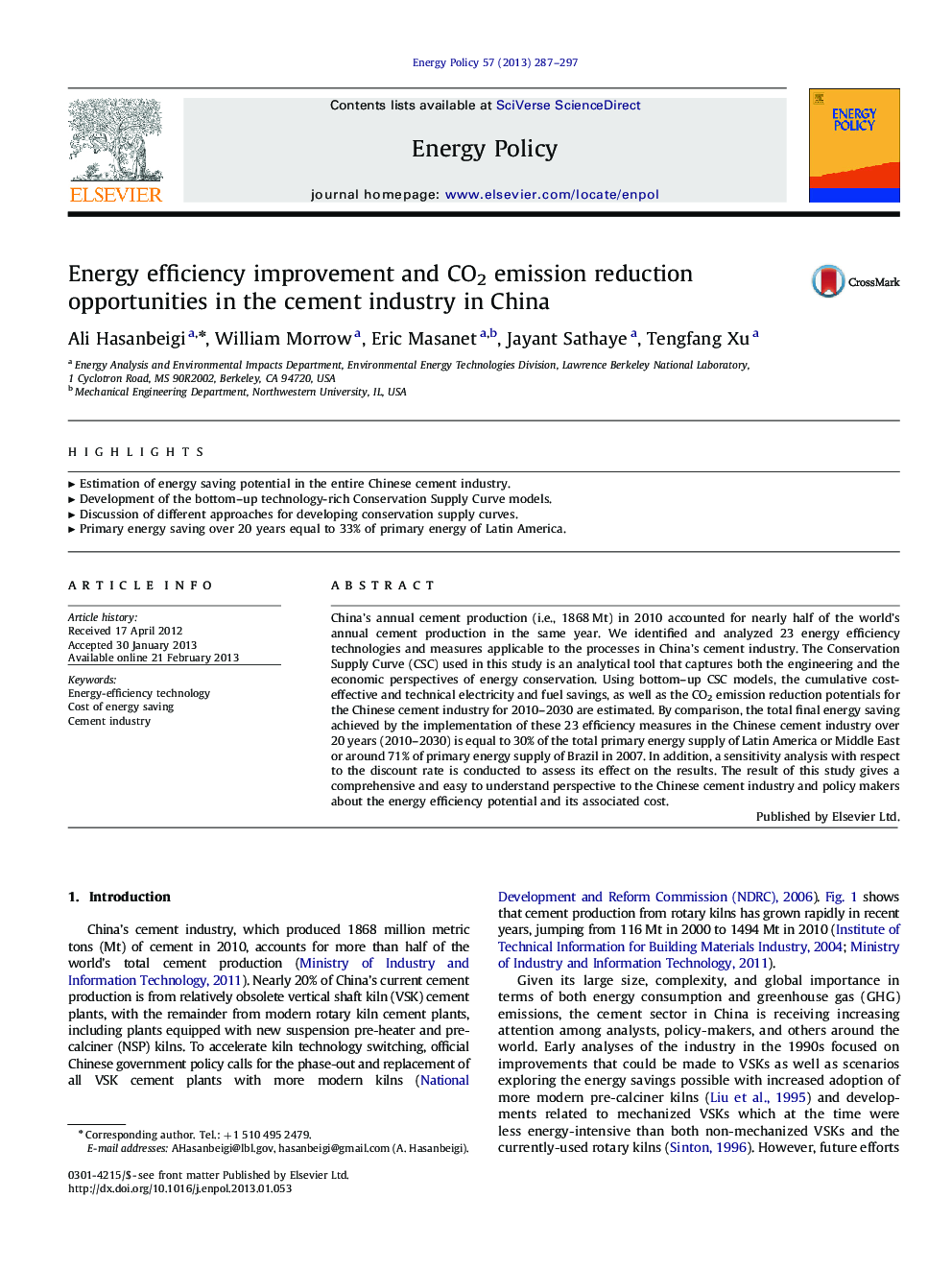| Article ID | Journal | Published Year | Pages | File Type |
|---|---|---|---|---|
| 992973 | Energy Policy | 2013 | 11 Pages |
China's annual cement production (i.e., 1868 Mt) in 2010 accounted for nearly half of the world's annual cement production in the same year. We identified and analyzed 23 energy efficiency technologies and measures applicable to the processes in China's cement industry. The Conservation Supply Curve (CSC) used in this study is an analytical tool that captures both the engineering and the economic perspectives of energy conservation. Using bottom–up CSC models, the cumulative cost-effective and technical electricity and fuel savings, as well as the CO2 emission reduction potentials for the Chinese cement industry for 2010–2030 are estimated. By comparison, the total final energy saving achieved by the implementation of these 23 efficiency measures in the Chinese cement industry over 20 years (2010–2030) is equal to 30% of the total primary energy supply of Latin America or Middle East or around 71% of primary energy supply of Brazil in 2007. In addition, a sensitivity analysis with respect to the discount rate is conducted to assess its effect on the results. The result of this study gives a comprehensive and easy to understand perspective to the Chinese cement industry and policy makers about the energy efficiency potential and its associated cost.
► Estimation of energy saving potential in the entire Chinese cement industry. ► Development of the bottom–up technology-rich Conservation Supply Curve models. ► Discussion of different approaches for developing conservation supply curves. ► Primary energy saving over 20 years equal to 33% of primary energy of Latin America.
